BLOG - Page 1
Recently created mixtures:

Sea-Buckthorn Macerated oil
February 7, 2019

Home made air freshener
June 29, 2016

Homemade Dog-rose distillate
June 28, 2016

Homemade jasmine distillate
June 22, 2016

Moxibustion treatment with Moxa stick
May 30, 2016

Face and body gentle oil cleanser
May 26, 2016
BLOG / LATEST ADDITIONS!
White Champa flower CO2 Extract (Michelia Alba) ☸ Essential oils ☸ Base / General
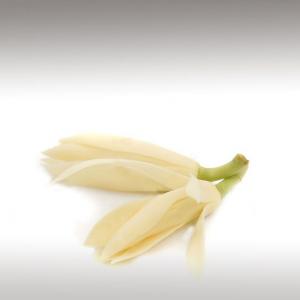
 Botanical Name: Michelia Alba
Botanical Name: Michelia AlbaCommon Method of Extraction: CO2
Part Typically Used: Flowers
Color: Dark brown with a yellowish cast
Consistency: Low to Medium
Perfumery Note: Top or heart note
Strength of Initial Aroma: Fresh, green, fruity, floral note
Michelia is one of the most popular flowering trees and the genus is now called Magnolia. Champaca tree is native to South Asia, Indochina, and southern China. The CO2-extracted oil comes from India. Solvent-free supercritical CO2 extraction of flowers had a higher yield than the essential oil.
It is a fragrance that interrupts anxious everyday thoughts and helps you to relax, to feel the vital sexual energy. The extract from the flowers is used in the preparation of perfume.
In terms of fragrance richness and intensity, white magnolia (or white champaca) essential oil is comparable to ylang ylang or jasmine. Its strong, floral aroma is accompanied by the sweet nectar of overripe fruits such as pineapple, pears, bananas, with a fresh green and citrus note. Interestingly, it is not only the flowers that are aromatic, but also the leaves of these magnolias.
Submitted by OperaDreamhouse (May 29, 2025)
White Thyme Essential Oil (Thymus Zygis) ☸ Essential oils ☸ Base / General
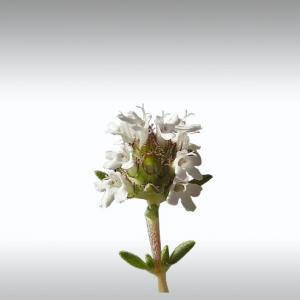
 Botanical Name: Thymus Zygis
Botanical Name: Thymus ZygisCommon Method of Extraction: Steam Distilled
Part Typically Used: Leaves, Flowering aerial parts
Color: Clear pale yellow to orange liquid
Consistency: Thin
Perfumery Note: Top
Cautions: White Thyme contains a high amount of thymol that can irritate mucus membranes, and must be diluted well before use.
Strength of Initial Aroma: Spicy, warm, herbaceous scent. It is very powerful and penetrating, with strong herbaceous notes. Herbaceous notes, green notes, fruity notes, high class florals, colognes, chypres and fougeres
White thyme, also known as common thyme or scientifically Thymus zygis, is an aromatic plant belonging to the Lamiaceae family, native to the Mediterranean region. White Thyme (Thymus zygis L.) is a low-growing, aromatic evergreen shrub in the Lamiaceae family - native to the sun-soaked hillsides and rocky plains of Spain, Portugal, and North Africa.
It’s typically harvested in late spring to early summer, just before or during full bloom, when thymol levels peak and its therapeutic potency is at its strongest.
Submitted by OperaDreamhouse (May 29, 2025)
Wild Bergamot Essential Oil (Monarda Fistulosa) ☸ Essential oils ☸ Base / General

 Botanical Name: Monarda Fistulosa
Botanical Name: Monarda FistulosaCommon Method of Extraction: Steam Distilled
Part Typically Used: Flowering plant / herb
Color: Clear / Pale yellow to light green
Consistency: Thin to medium
Perfumery Note: Middle
Shelf Life: 6 years
Strength of Initial Aroma: Minty, lemony, and slightly peppery
Wild Bergamot (Monarda fistulosa), also known as a Bee Balm or Oswego Tea, is native to much of North America, from northern Mexico to southern Canada. It is a perennial herb in the Mint family that can grow up to four feet tall.
Bee Balm is a beautifully fragrant and complex Essential Oil that smells a lot like Palmarosa and Geranium Essential Oils mixed with Citrus - it truly is a delight to burn and to use as part of a luxurious aromatic bath!
Submitted by OperaDreamhouse (May 29, 2025)
Wild Carrot Seed Essential Oil (Daucus Carota) ☸ Essential oils ☸ Base / General
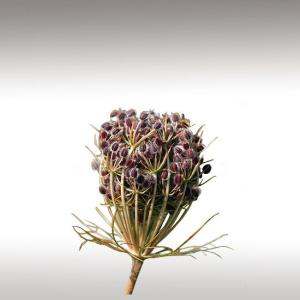
 Botanical Name: Daucus Carota
Botanical Name: Daucus CarotaCommon Method of Extraction: Steam distilled
Part Typically Used: Seed plants
Color: Pale yellow to amber
Consistency: Thin to medium
Perfumery Note: Middle
Shelf Life: 6 years
Strength of Initial Aroma: Distinct woody, earthy, and root-like fragrance
Carrot Seed essential oil is rich in beta carotene and Vitamins B, C, D and E. It is mainly obtained from wild carrots, usually found in Europe. The oil is extracted from the plant's seeds and should not be confused with Carrot Oil (which is obtained by infusing carrot material into a base oil).
The wild carrot, originally from Europe, is very widespread on the side of the roads, in the meadows. Its liver and diuretics properties were cited in the 16th century. The essence is extracted from the seeds, harvested at the end of summer when the umbels close on themselves.
Wild carrot essential oil is very rare and hard to obtain, but is a wonderful aromatherapy, cosmetic and perfumery ingredient.
Submitted by OperaDreamhouse (May 29, 2025)
Tonka Bean Absolute (Dipteryx Odorata) ☸ Essential oils ☸ Base / General
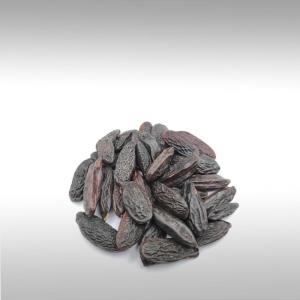
 Botanical Name: Dipteryx Odorata
Botanical Name: Dipteryx OdorataCommon names: Tonkin Bean, Cumaru, Kumaru
Common Method of Extraction: Solvent Extracted Absolute
Part Typically Used: Dried Beans (Seeds)
Color: Off-white to brown
Consistency: Very thick paste-like mass that is solid at room temperature
Perfumery Note: Middle, Excellent Fixative
Strength of Initial Aroma: Very rich, caramel-like, powdery-sweet of new mown hay with a warm herbal and soft tobacco-like undertone
Tonka Beans or seeds are removed from the fruit before drying and then left to soak in alcohol for anything up to 24 hours where they will expand in size. After removal from the alcohol, the Tonka Beans appear black, shrivelled and shrink in size. A white powder which accumulates on the exterior is actually natural Coumarin. In fact, before synthetic Coumarin was created, Tonka was the main source of this material.
Tonka Bean Absolute is one of the finest perfume ingredients for fixation of natural perfumes. It can add a natural gourmand effect in white flower accords, such as tuberose, and also harmonizes well with vanilla, leather and tobacco notes. The profile is reminiscent of Caramel, Almond and Vanilla.Naturally occurring coumarin in Tonka Beans is considered safe for dermal use, and is not carcinogenic, not phototoxic, and not an allergen; this, however, is not the case with synthetic coumarin and coumarin derivatives.
Submitted by OperaDreamhouse (February 10, 2024)
Lovage Root Essential Oil (Levisticum Officinale) ☸ Essential oils ☸ Base / General
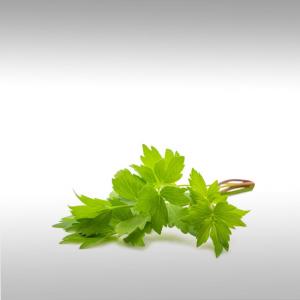
 Botanical Name: Levisticum Officinale
Botanical Name: Levisticum OfficinaleCommon Names: In Germany it is known as Maggikraut and in the Netherlands Maggiplan. In France Leviche and in Italy Levistico. In Swedish its Libbsticka.
Common Method of Extraction: Steam Distilled
Part Typically Used: Roots and Leaves
Color: Amber to olive brown
Consistency: Thin
Perfumery Note: Medium
Strength of Initial Aroma: Rich, spicy warm, fresh aromatic, intensely sweet and 'root like' odor Lovage is one of the old English herbs that was formerly very generally cultivated, and is still occasionally cultivated as a sweet herb. Lovage was used as a medicinal herb plant in the fourteenth century. Its reputation is believed to be founded largely on its pleasing aromatic odour.
Lovage is used in perfumes in minute amounts to produce 'special effects', or to lend warm background notes in spicy or Oriental bases. It gives interesting effects with Rose bases and in carnation compositions. In respect to penetrative odor, this oil ranks among the most powerful of all natural materials.
Submitted by OperaDreamhouse (February 10, 2024)
Hay Absolute (Graminaes Mix) ☸ Essential oils ☸ Base / General
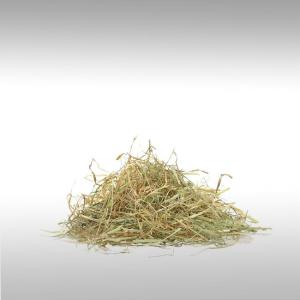
 Botanical Name: Graminaes Mix
Botanical Name: Graminaes MixCommon Method of Extraction: Solvent Extracted Absolute
Part Typically Used: Dried Leaves / Tops
Color: Olive green brown in colour
Consistency: Thick paste consistency that requires gentle warmth prior to use
Perfumery Note: Middle
Strength of Initial Aroma: A soft, suave, warm, sweet, dry, coumarinic, herbaceous bouquet with a dried fruit/jam-like undertone
One of the most sublime of all perfume materials. Hay is, as literally as possible, the smell of liquid summer sunlight. Perfumers, knowing that this fragrance is not quite appealing on its own, suggest that Hay needs a ‘support group’ of mossy and green nuances to bring out its best features.
As the aroma begins to disperse into the environment from the perfumers strip, one realizes that absolute has fine diffusive power and tenacity with a uniform dryout from top-note to base-note.
Hay absolute is diffusive, very tenacious, and makes an excellent addition to the perfumer's palette. Its sweet, suave, herbaceous / fruity undertone is wonderful for rounding off rough edges in transitions between different stages of the aromatic life of many compositions.
The classic use for Hay absolute is in new mown hay compostions but also finds use in amber bases, chypre, high class florals, forest notes, colognes, literary perfumes, tea notes and fougere.
Submitted by OperaDreamhouse (February 9, 2024)
Cocoa Absolute (Theobroma Cacao) ☸ Essential oils ☸ Base / General
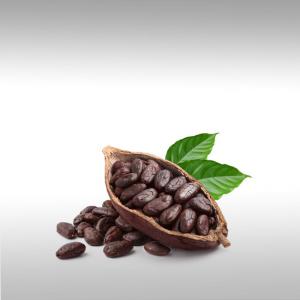
 Botanical Name: Theobroma Cacao
Botanical Name: Theobroma CacaoCommon Method of Extraction: Solvent Extracted Absolute
Part Typically Used: Raw, dried beans
Color: Dark Brown
Consistency: Very thick, until gently heated
Perfumery Note: Middle to Base
Strength of Initial Aroma: Rich, sweet, and chocolaty aroma
Cocoa Absolute is highly recommended for chocolate lovers as the aroma is like that of fine dark chocolate. Try using it as a rich middle to base note in love formulas or for adding a sense of intrigue to your perfumes. Cocoa Absolute seems ideally suited for environmental fragrances as well as scenting decadent soaps and candles.
It is rich in flavonoids, the antioxidant components made by plants to prevent premature breakdowns of their cells caused by exposure to atmospheric agents like air, heat and sunlight.
Submitted by OperaDreamhouse (February 9, 2024)
Cocoa Absolute (Theobroma Cacao) ☸ Essential oils ☸ Beauty / Cosmetics

 Cacao Absolute boost collagen production and protect the skin from environmental damage and rapid aging.
Cacao Absolute boost collagen production and protect the skin from environmental damage and rapid aging.Submitted by OperaDreamhouse (February 9, 2024)
Vanilla Extract (Vanilla Planifolia) ☸ Essential oils ☸ Base / General
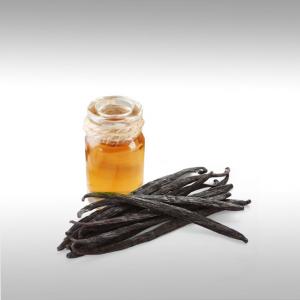
 Vanilla Planifolia Fruit Extract is made from the mature fruits of the Vanilla Planifolia orchid through extraction methods like solvent extraction, enfleurage, by supercritical fluid extraction with natural carbon dioxide which involve dissolving or capturing the aromatic compounds from the fruits.
Vanilla Planifolia Fruit Extract is made from the mature fruits of the Vanilla Planifolia orchid through extraction methods like solvent extraction, enfleurage, by supercritical fluid extraction with natural carbon dioxide which involve dissolving or capturing the aromatic compounds from the fruits.Vanilla Extract is a plant extract that provides anti-oxidant, astringent, anti-bacterial and moisturizing effects for skin care and bath additive preparations.
It makes use of its soothing properties to calm and comfort the skin. It also provides hydration and nourishment, contributing to softer, smoother skin. Additionally, the pleasant scent of Vanilla adds a luxurious sensory experience to skincare products.
Submitted by OperaDreamhouse (February 7, 2024)
Wild Fir Essential Oil (Abies Balsamea) ☸ Essential oils ☸ Base / General
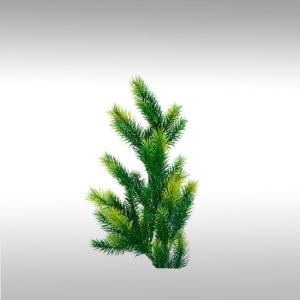
 Botanical Name: Abies Balsamea
Botanical Name: Abies BalsameaCommon Method of Extraction: Steam distilled
Part Typically Used: Needles
Color: Pale yellow / Dark green
Consistency: Liquid
Perfumery Note: Middle to Top
Strength of Initial Aroma: Woody, fresh and resinous
Like so many popular essential oils, fir needle essential is extracted through a process of steam distillation from fir needles, primarily from the species Abies Balsamea. The needles are the most important part of this plant, as that is where the active ingredients and powerful chemical compounds are located. The combination of tricyclene, a-pinene, borneol, limonene, acetate, and myrcene all combine for these impressive health effects.
Wild Fir essential oil is known in aromatherapy as a strengthening essential oil, particularly suitable for use during the cold season. It is ideal for indoor steaming, freshening and purifying the air.
Balsam Fir (Abies Balsamea) essential oil has a very sweet, rich, deep, balsamic, evergreen aroma and a very light, clean terpenic top note like that released from freshly crushed fir needles. Bright and elevating smell.
Submitted by OperaDreamhouse (February 7, 2024)
Niaouli Essential Oil (Melaleuca Quinquenervia) ☸ Essential oils ☸ Base / General
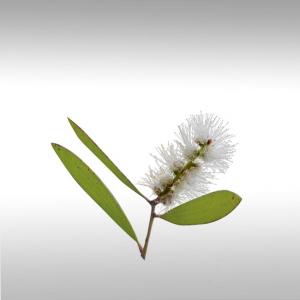
 Botanical Name: Melaleuca Quinquinervia
Botanical Name: Melaleuca Quinquinervia Common Method of Extraction: Steam distilled
Part Typically Used: Grey-green leaves
Color: Clear
Consistency: Thin
Perfumery Note: Top
Strength of Initial Aroma: Earthy, fruity, lemony, sweet, camphor-like
Niaouli essential oil is obtained by distilling wild myrtles, which, like Tea Tree, Cajeput, Rosemary, and Manuka, belong to a family of aromatherapeutically potent deadly plants.
Melaleuca Quinquinervia Viridiflora is one of four commercially important and aromatherapeutically significant species of the genus Melaleuca, the other three being M. Alternifolia (Tea Tree) and M. ccajuputi (Cajuput) and M. Ericifolia (Rosalina).
Niaouli essential oil is extracted via steam distillation of the leaves and green branchlets. Nerolina is grown in plantations, wild harvesting also occurs.Niaouli essential oil was formerly known as 'gomenoil' because it was first distilled in the Gomeno area of New Caledonia in the early 20th century.
Submitted by OperaDreamhouse (February 6, 2024)
Niaouli Essential Oil (Melaleuca Quinquenervia) ☸ Essential oils ☸ Spiritual Practises

 Emotionally and energetically, Niaouli essential oil has stress relieving properties that relax the body and mind with ease. Niaouli oil has a wonderful cooling and calming effect that can help restore emotional balance.
Emotionally and energetically, Niaouli essential oil has stress relieving properties that relax the body and mind with ease. Niaouli oil has a wonderful cooling and calming effect that can help restore emotional balance.Submitted by OperaDreamhouse (February 6, 2024)
Amyris Sandalwood Essential Oil (Amyris Balsamifera) ☸ Essential oils ☸ Base / General
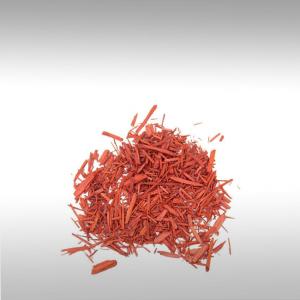
 Botanical Name: Amyris balsamifera
Botanical Name: Amyris balsamiferaCommon Method of Extraction: Steam distilled
Part Typically Used: Tree bark
Color: Light yellow
Consistency: Viscous
Perfumery Note: Base note and scent fixer
Strength of Initial Aroma: Sweet, balsamic, woody-like scent
Amyris essential oil is distilled from the small shrubby tropical evergreen tree Amyris balsamifera, native to Haiti, which also grows in the forests of the Dominican Republic. Due to its many beneficial properties and uses, it has spread all over the world, especially in countries where it has favorable tropical climates to grow, such as India. Therefore, now the essential oil is often called the Sandalwood of West India.
The essential oil is obtained by steam distillation of tree bark, which is dried for more than a year. Because of its high oil content, this wood burns by itself, like a candle, and is hence called candle wood by the local population. It is a less expensive alternate to pure Sandalwood.
Submitted by OperaDreamhouse (February 6, 2024)
Amyris Sandalwood Essential Oil (Amyris Balsamifera) ☸ Essential oils ☸ Spiritual Practises

 The smell of this essential oil is considered aphrodisiac. Relaxing the tension, it rises together. Recommended for those who lack inspiration and creative energy, meditating.
The smell of this essential oil is considered aphrodisiac. Relaxing the tension, it rises together. Recommended for those who lack inspiration and creative energy, meditating.Submitted by OperaDreamhouse (February 6, 2024)
Page 1 of 48

